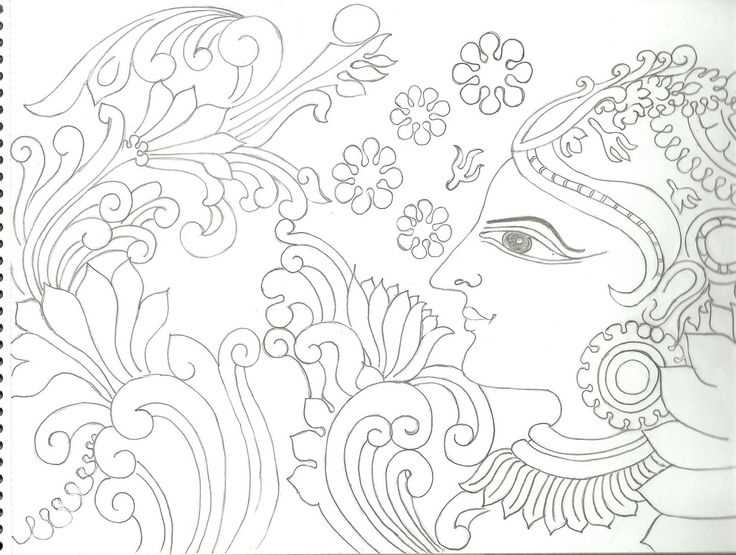
Mexico City is renowned for its vibrant street art scene, which adds a colorful and dynamic element to the city’s urban landscape. From the bustling neighborhoods of Roma and Condesa to the gritty streets of Tepito and La Lagunilla, the capital is a canvas for artists to express their creativity and share their messages.
One of the unique aspects of street art in Mexico City is its fusion of traditional Mexican art forms with contemporary urban aesthetics. Artists draw inspiration from ancient Aztec murals, traditional folk art, and indigenous cultures, infusing their work with a sense of history and cultural identity. This blending of the old and new creates a visually striking and culturally relevant art form.
Furthermore, street art in Mexico City serves as a powerful platform for social and political commentary. Artists use their work to shed light on issues such as inequality, corruption, and gender equality. Their murals and graffiti act as a visual language, conveying powerful messages and sparking important conversations within the community.
Whether you are a street art enthusiast or simply a curious traveler, exploring the streets of Mexico City is like walking through an open-air art gallery. Every corner reveals a new masterpiece, each with its own story to tell. So, grab your camera and embark on a journey to discover the vibrant and thought-provoking world of street art in Mexico City!
Graffiti: A Form of Expression
Graffiti has long been recognized as a powerful form of expression in Mexico City. The vibrant street art scene in the city is a testament to the creativity and passion of the artists who use graffiti as a means of communication.
One of the reasons why graffiti is such a popular form of expression in Mexico City is its ability to make a statement. Whether it is political, social, or personal, graffiti allows artists to convey their thoughts and opinions in a visually striking and impactful way.
Moreover, graffiti provides a platform for marginalized communities to have their voices heard. It allows them to reclaim public spaces and express their identity and culture. Through graffiti, artists can challenge social norms and highlight important social issues such as inequality, poverty, and violence.
The graffiti in Mexico City is not limited to just spray-painted words and images on walls. It is a form of art that incorporates various techniques and styles. From large murals that cover entire buildings to small stencils hidden in alleyways, graffiti in Mexico City is a diverse and dynamic art form.
Inspiration and Influences
Mexico City’s vibrant street art scene draws inspiration from various sources. The city’s rich history and cultural heritage provide artists with a wealth of inspiration. From ancient Aztec mythology to modern Mexican traditions, the cultural references in the graffiti art add depth and meaning to the works.
Furthermore, the international street art scene has also influenced graffiti in Mexico City. Artists from around the world have come to the city to leave their mark, resulting in a fusion of styles and techniques. This global exchange of ideas has helped shape the unique and diverse graffiti culture in Mexico City.
Promoting the Art Form
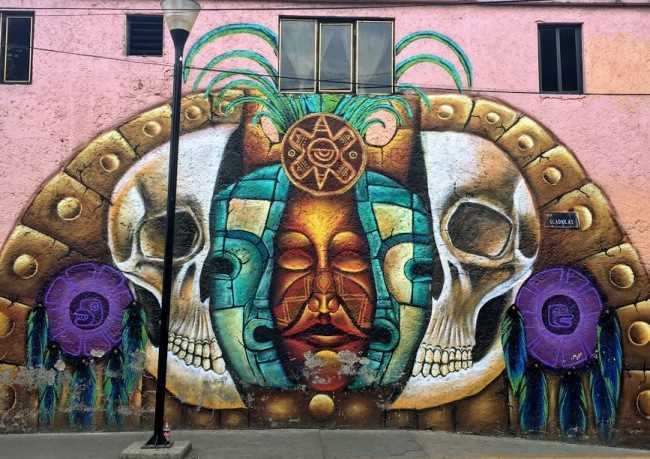
While graffiti is often associated with vandalism, Mexico City has taken steps to promote it as a legitimate art form. The city hosts various street art festivals and events that celebrate graffiti and its contributions to the cultural landscape.
Additionally, there are organizations and collectives dedicated to supporting and promoting graffiti artists in the city. These groups provide artists with legal spaces to create their works and advocate for graffiti as a form of artistic expression.
- Overall, graffiti serves as a powerful means of expression in Mexico City, allowing artists to voice their opinions, reclaim public spaces, and inspire change. Through its vibrant and diverse street art scene, Mexico City continues to be a haven for graffiti artists and enthusiasts alike.
The Vibrant Colors of Mexico
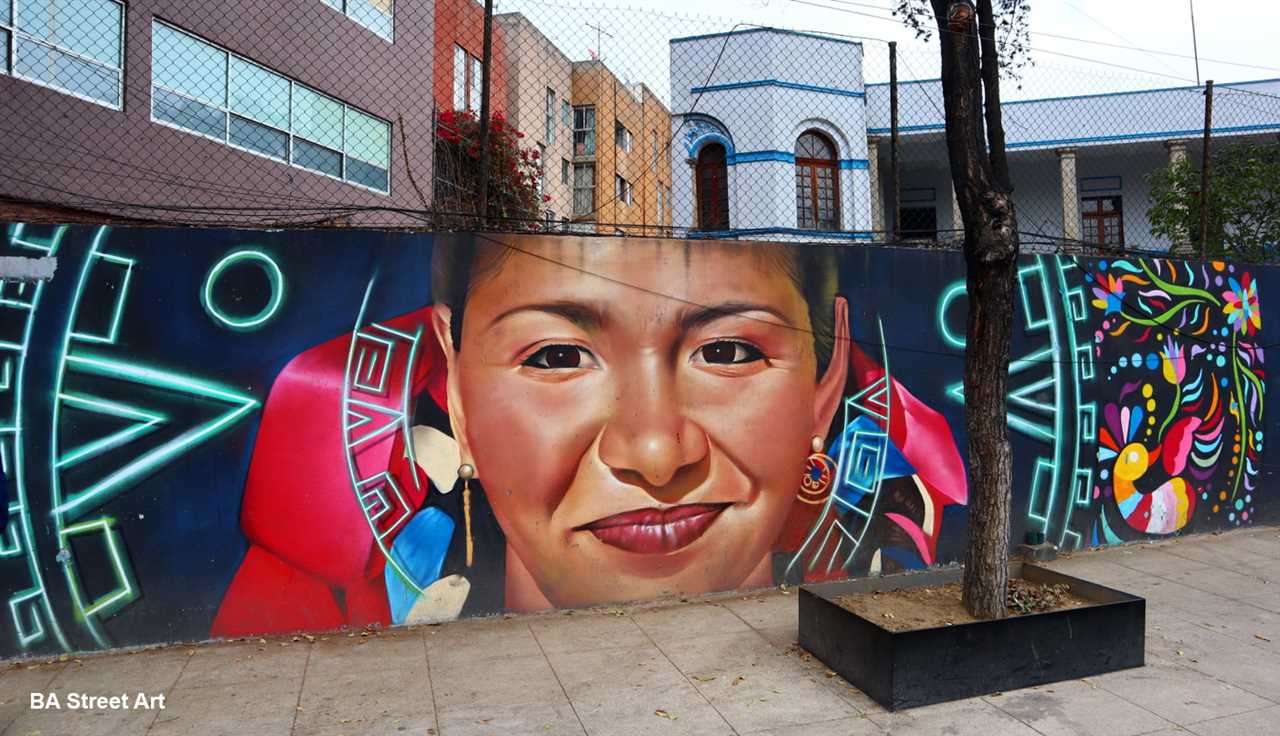
Mexico is known for its vibrant and rich colors that can be seen throughout the country’s culture, architecture, and, of course, its street art. These colors are a reflection of the country’s vibrant and diverse culture.
When exploring the streets of Mexico City, it is impossible to miss the explosion of colors that adorn the walls of buildings. From bright yellows to deep blues, every color of the rainbow can be found in the street art of Mexico.
The vibrant colors used in Mexican street art not only catch the eye but also tell a story. They convey the energy, passion, and creativity that are part of the Mexican identity. The colors create a sense of life and vitality that is contagious.
One of the reasons why these colors are so vibrant is the use of high-quality paint by Mexican street artists. The artists take pride in their work and use paints that are specially formulated to withstand the harsh conditions of the city’s climate, ensuring that the colors remain vibrant for years to come.
Furthermore, the colors used in Mexican street art are often inspired by the rich natural surroundings of the country. From the lush greens of the jungles to the fiery reds of the desert, these colors are incorporated into the art to celebrate Mexico’s natural beauty.
Overall, the vibrant colors of Mexico are an essential part of the street art scene in Mexico City. They bring life and energy to the urban landscape and reflect the culture and identity of the country. So, next time you visit Mexico City, be sure to take a moment to appreciate the vibrant colors that make its street art truly unique.
The Impact of Street Art on the City
Street art has had a profound impact on the cityscape of Mexico City. With its vibrant colors and powerful messages, street art has transformed the city into an open-air art gallery.
Expression of Identity and Culture

Street art has become a way for artists to express their identity and communicate their cultural heritage. In Mexico City, street art often reflects the rich history and diversity of the city’s inhabitants. It serves as a powerful tool for marginalized communities to reclaim their space and share their stories.
Through vibrant murals and intricate graffiti, street art in Mexico City preserves and celebrates indigenous traditions and values. It brings to light social issues and encourages dialogue, fostering a sense of unity and pride among the residents.
Revitalizing Neighborhoods

Street art has played a significant role in revitalizing neighborhoods and transforming neglected spaces. In Mexico City, areas that were once considered run-down and unsafe have been revitalized through the addition of murals and street art installations.
These vibrant artworks attract locals and tourists alike, bringing new life and economic opportunities to these neighborhoods. They create a sense of pride and ownership among the residents, making the spaces safer and more inviting.
Moreover, street art has become a powerful tool for urban improvement projects. The city government, in collaboration with local artists, has used street art to beautify public spaces, create more walkable areas, and cultivate a sense of community.
Overall, street art has had a transformative impact on Mexico City, making it a more vibrant, inclusive, and culturally rich city.
Exploring Mexico City’s Street Art Scene

Mexico City is known for its vibrant and diverse street art scene. From colorful murals to intricate graffiti, the city is a canvas for both local and international artists. Exploring Mexico City’s street art is like taking a journey through the city’s culture, history, and social issues.
One of the best ways to experience Mexico City’s street art scene is by taking a guided tour. These tours can take you to different neighborhoods, such as Roma and Condesa, where you can see some of the most impressive street art in the city. Local guides know the hidden spots and can provide insights into the artists and their work.
Walking through the streets of Mexico City, you’ll come across a variety of styles and themes in the street art. Some pieces are political, addressing current social issues and expressing dissent. Others are purely artistic, showcasing the talent and creativity of the artists. Many murals pay tribute to Mexico’s rich history and indigenous cultures.
In addition to exploring the neighborhoods, you can also visit art galleries and cultural centers that focus on street art. These spaces often host exhibitions and events, providing a deeper understanding of the art form and its impact on the city’s culture. Some notable art institutions include Museo del Juguete Antiguo, which showcases street art on vintage toys, and MUCA, a contemporary art museum.
Exploring Mexico City’s street art scene is not only a visual experience but also an opportunity to understand the city’s cultural identity and social issues. Whether you’re a fan of contemporary art or simply interested in exploring the city’s vibrant neighborhoods, Mexico City’s street art is sure to leave a lasting impression.
Murals: Stories on the Walls

Mexico City is renowned for its vibrant street art scene, where colorful murals can be found on nearly every corner. These magnificent artworks serve as a form of storytelling, conveying the rich history, culture, and social issues of the city.
Preserving History
One of the remarkable aspects of murals in Mexico City is their ability to capture and preserve the country’s history. Many murals depict significant events, such as the Mexican Revolution or traditional indigenous customs. These artworks act as visual reminders of past struggles, triumphs, and cultural heritage.
Expressing Social Commentary
Street art is also a powerful medium for social commentary. Many murals in Mexico City are created by local artists who use their work as a platform to express their opinions on social and political issues. These murals often address topics such as inequality, injustice, and environmental concerns. They serve as a form of protest, sparking conversations and encouraging reflection among the community.
The murals not only convey messages but also provide a voice for marginalized groups who may otherwise not have a platform to share their perspectives.
Celebrating Culture
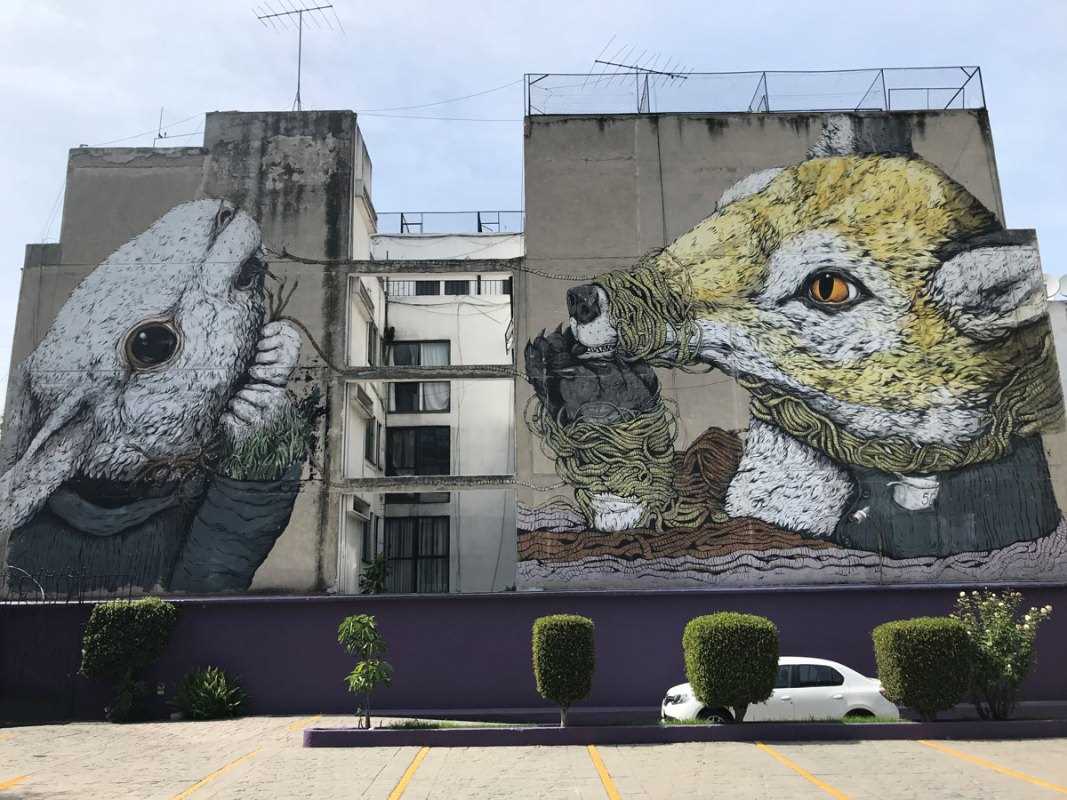
Mexico City’s murals are a celebration of its vibrant culture. Many artworks depict traditional Mexican folklore, religious iconography, or indigenous symbols. These murals showcase the city’s diverse heritage and pay homage to the customs and traditions that have shaped Mexican society.
Moreover, murals often incorporate vibrant colors and elaborate designs. They transform ordinary walls into mesmerizing works of art, adding beauty and energy to the city’s streets.
Mexico City’s murals are not only visually captivating but also hold deep meaning. They tell stories, convey messages, and provide a voice for the community. These remarkable artworks make the streets of Mexico City an open-air gallery that captivates locals and visitors alike.
Mexico City: A Canvas for Artists
Mexico City, with its vibrant culture and rich history, has long been a haven for artists seeking inspiration and a canvas for their creativity.
From the colorful neighborhoods of Roma and Condesa to the bustling streets of downtown, Mexico City offers a mosaic of artistic expression. It is a city where the walls themselves tell stories, adorned with stunning murals and vibrant street art.
Artistic Inspiration
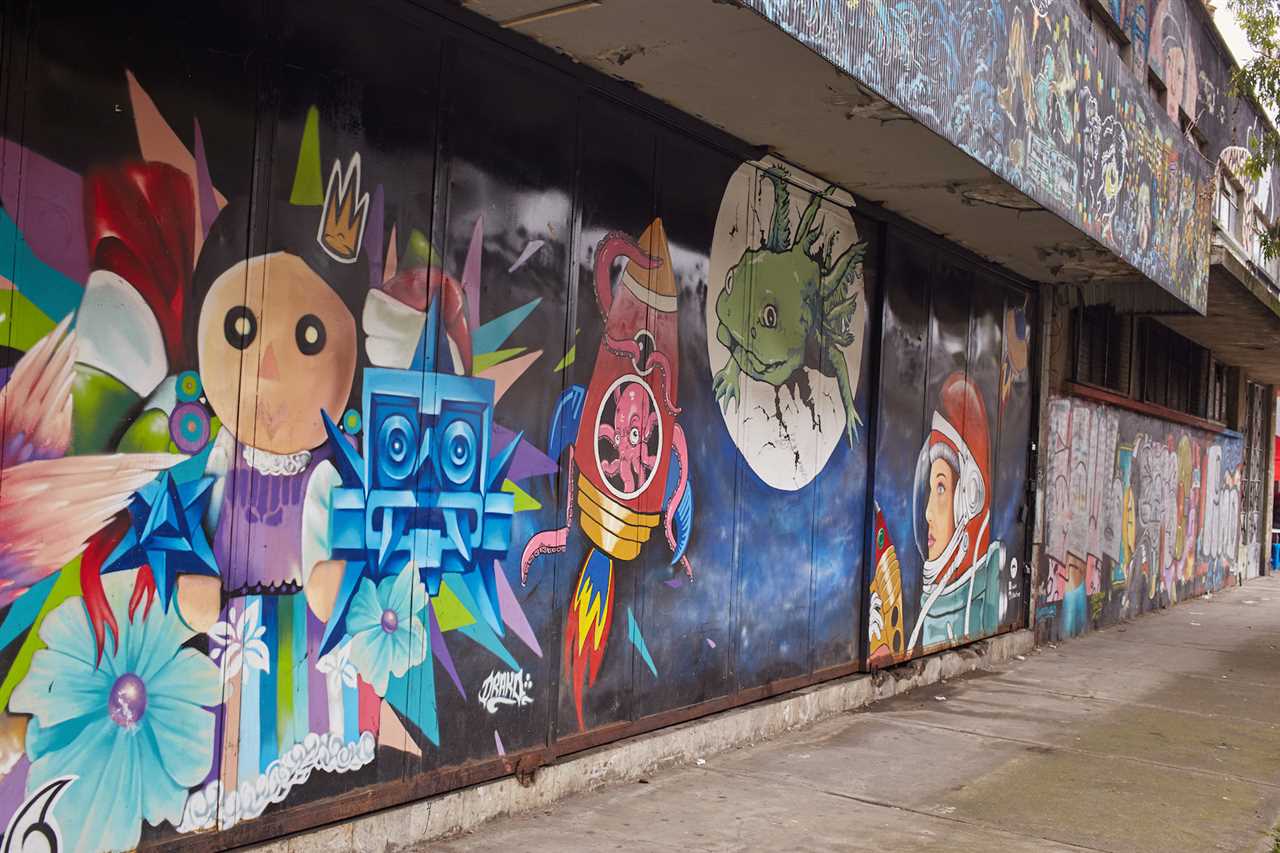
With its diverse and eclectic mix of people, Mexico City provides a melting pot of inspiration for artists. The city’s rich indigenous heritage, combined with influences from European and American cultures, creates a unique artistic landscape.
Artists draw from the city’s history, folklore, and social issues to create works that reflect the complexities of Mexican society. They use their art to address important topics such as identity, politics, and inequality, breathing life into the walls and streets of Mexico City.
A Display of Talent

One cannot explore Mexico City without encountering the incredible talent displayed by local artists. The streets are alive with color and creativity, as artists transform ordinary walls into breathtaking works of art.
From large-scale murals that cover entire buildings to smaller, hidden gems tucked away in alleyways, the city’s street art scene is a testament to the imagination and skill of its artists. Each piece tells a story, inviting viewers to engage with the art and the messages it conveys.
Moreover, street art in Mexico City is not confined to walls alone. Artists have taken their creativity to other mediums, such as sculptures and installations, which can be found in parks and public spaces across the city.
Mexico City truly is a canvas for artists. It is a place where creativity thrives, and walls become a platform for self-expression and dialogue. The ever-evolving street art scene adds vibrancy and color to the city’s already bustling streets, making it an art lover’s paradise.
Preserving Mexico City’s Street Art
Street art plays an integral role in the cultural landscape of Mexico City. Its vibrant murals and graffiti reflect the city’s rich history and serve as a form of self-expression for its residents. However, with rapid urban development and the threat of vandalism, the preservation of Mexico City’s street art has become a necessity.
Many organizations and individuals have taken it upon themselves to protect and conserve the street art of Mexico City. They recognize its value as a unique form of artistic expression that should be celebrated and preserved for future generations.
One approach to preserving street art is through documentation. Photographers and historians capture the vibrant murals and graffiti, creating a visual archive of the city’s street art scene. These images serve as a record of the ever-changing nature of street art and its significance within the context of Mexico City.
Another method of preservation is through community engagement. Residents and art enthusiasts come together to organize events and workshops that promote the creation and appreciation of street art. By providing a platform for artists to showcase their work and by involving the community, these initiatives not only support the continuation of street art but also foster a sense of pride and ownership among the residents.
The government has also taken steps to preserve Mexico City’s street art. Some neighborhoods have designated certain areas as legal walls, where artists can freely express themselves without the threat of legal consequences. These designated spaces not only encourage the creation of new street art but also deter vandalism in other parts of the city.
In addition, artists and community organizations have been collaborating with local authorities to restore and revitalize existing murals and graffiti. Through careful restoration and preservation techniques, these artworks can be saved from the effects of weathering and decay, ensuring their longevity.
Preserving Mexico City’s street art is not just about protecting the physical artworks themselves. It is also about recognizing the cultural and historical significance they hold. By valuing and preserving street art, we preserve the stories, voices, and identities of the people who created them.

I am a mural enthusiast and a fervent admirer of street art. Rather than creating murals myself, I am passionate about collecting them. My love for street art knows no bounds. I am dedicated to curating and cherishing these artworks that grace the streets. My collection stands as a testament to my profound appreciation for this form of artistic expression.
read about me



